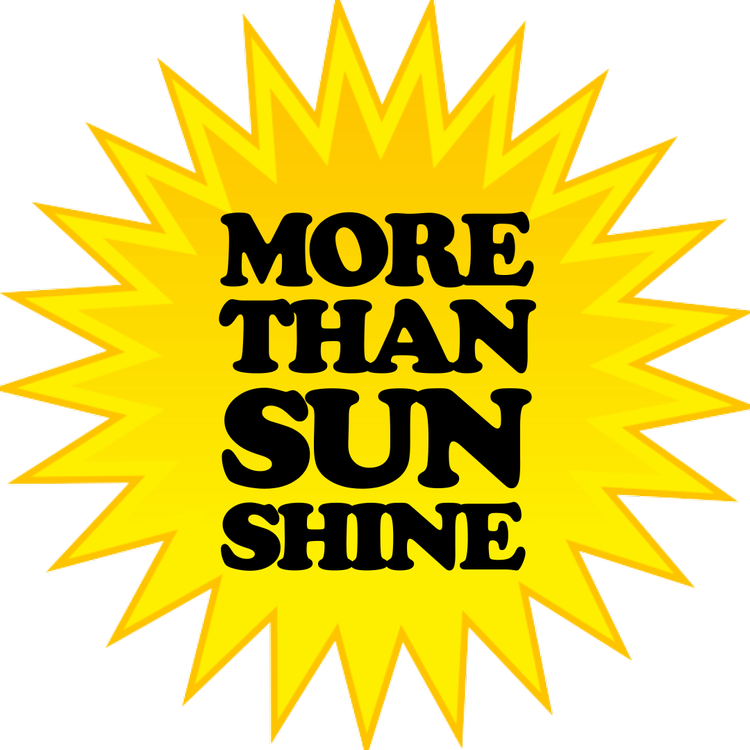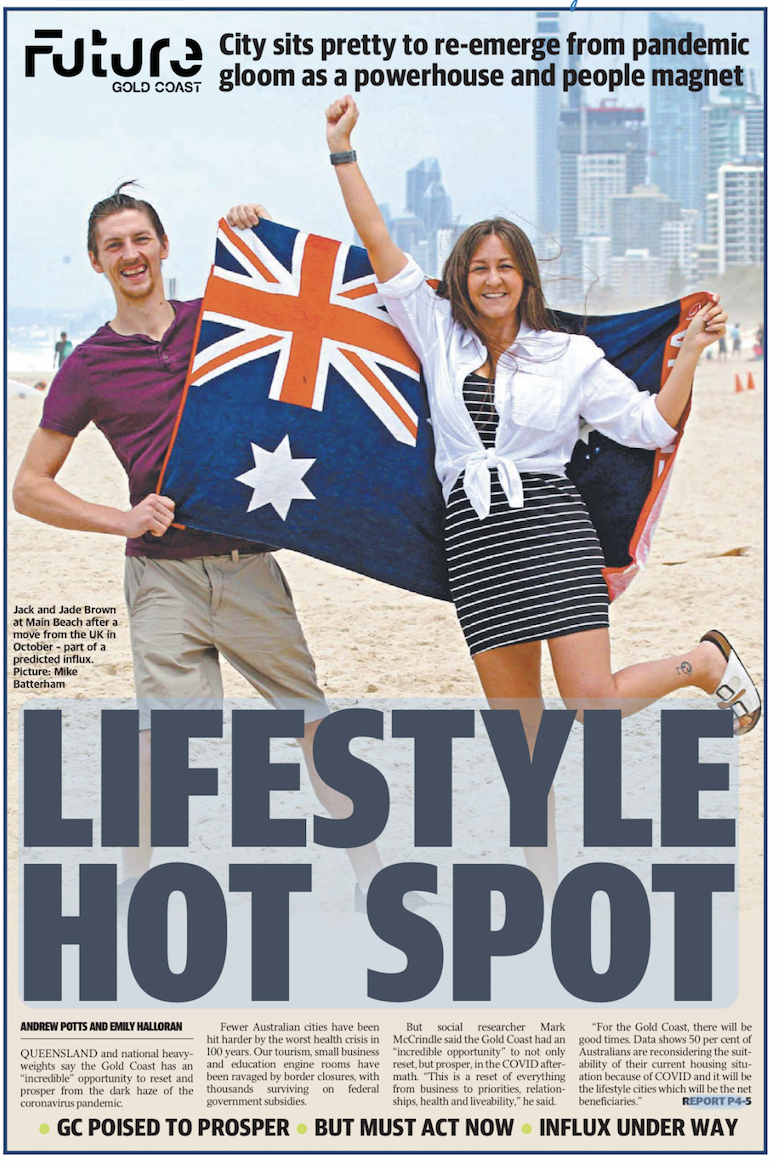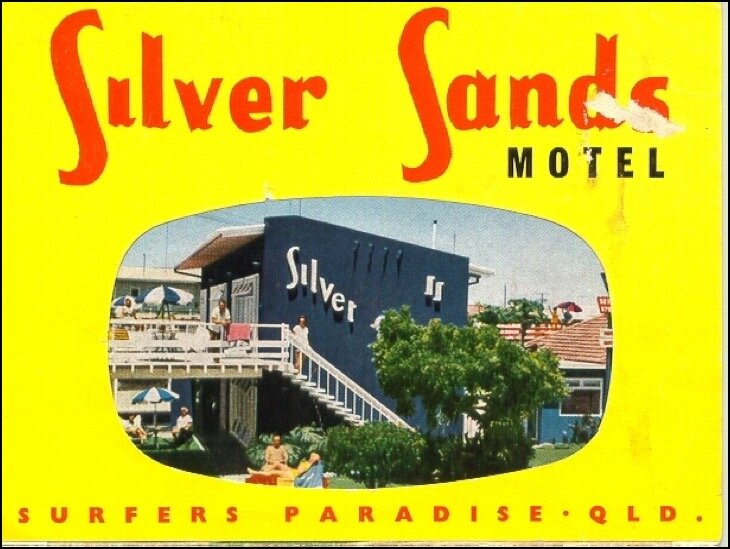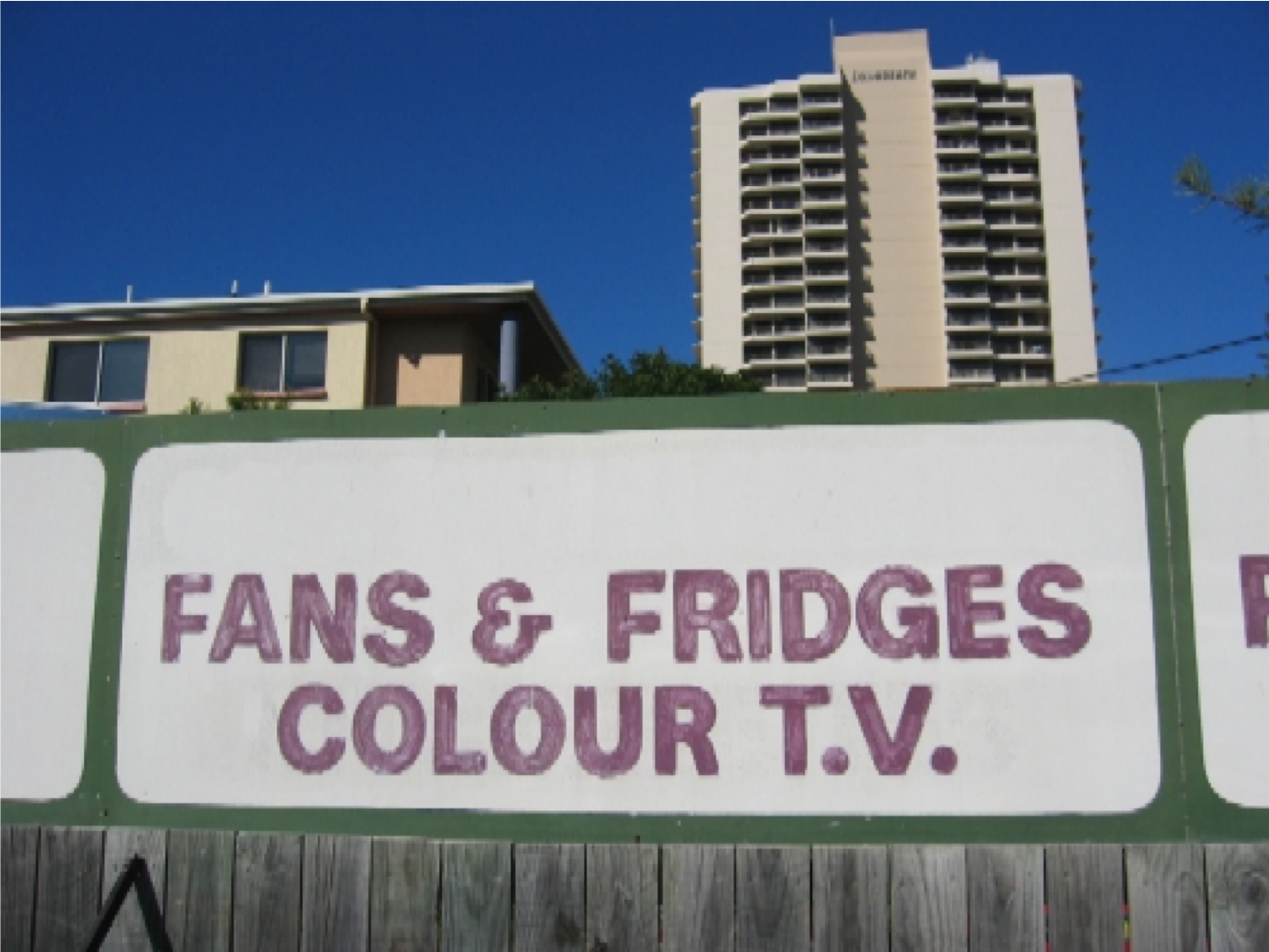A missing option in the Gold Coast housing market
When I rise, as the sun also does almost every day here, I often remind myself that this city offers lifestyle qualities that are beyond the wildest dreams of most of the world population. However, the urban design enthusiast in me sometimes frets about the impact of some recent and emerging developments. I worry that the whole experiment of urban life is failing at the Gold Coast, and we are on a fast track to destroying the very things that attracted us to live here in the first place.
What I cherish most about the Gold Coast are the sunny climate and the beach. Perhaps as a consequence, I have been enamoured with highrise development as a way to maximise the number of people who can holiday, live, work, or study as I do, within a hop, skip and jump to the beach. I have an Instagram account called @LivingHigh, a hashtag #gctallbuildings, and an archive of photos taken over the last 25 years, which I curate as a kind of online history of Gold Coast highrise buildings.
Since the 1970s, in the national psyche the Gold Coast has been synonymous understandably with resort-style highrise hotels and apartment buildings. I have previously written about the evolution of tall buildings in this city in an essay for the Australian Institute of Landscape Architects titled ‘The view from up here: changing visions for the Gold Coast.’ What always remains constant is a pre-occupation with tall buildings by news and advertising media that overshadows attention on other housing typologies which are also critically important in the city’s residential mix.
I recently visited a friend who lives in an enviable new medium-rise apartment complex at Varsity Lakes. Another friend in Tallebudgera Valley proudly showed me his new solar panels that power the family home, in a garden that produces more vegetables than they can eat…though he did complain about patchy internet and mobile phone coverage. I also paid a pleasurable visit to friends who are renting a unit in the former Commonwealth Games Village at Southport. They love the ambience, with proximity to shops and the lightrail leading north to Brisbane or South to Pacific Fair.
There are many ways to live happily at the Gold Coast, and when you travel around different parts of our city, it’s plain to see that it isn’t just a tourist town anymore. The scales have definitely tipped in favour of permanent communities, a fact that has even been confirmed by the Betoota Advocate.
The population of the Gold Coast is well on the way to the projected 1 million by 2040. Most of these citizens will have various lifestyle preferences, needs, and budgets, and all will inevitably want and expect a range of housing options to suit them.
The COVID pandemic has forced changes to how we live and work. Many people are now working from home with the aid of online meeting tools like zoom. And this looks likely to continue. Urban strategists must now re-think plans for telecommunications and transport infrastructure, employment centres, and housing supply.
Not surprisingly, there is renewed interest in the virtues of suburbia. I really like the motto of the Suburban Alliance: ‘Better Suburbs = Better Cities’, and their focus on the opportunities of more distributed and decentralised cities. Reading their vision and strategies again prompted me to remember the late Professor Patrick Troy, who led the Urban Research Unit at the Australian National University.
Since the 1970s, Prof. Troy was a consistent advocate for low-density suburbia. This was despite opposition by newer generations of urban strategists like me who entered the profession in the 1990s with a strong bias for urban consolidation. We condemned suburban sprawl, primarily for the road traffic and fossil fuel consumption that it generates. We believed in reducing car dependency by orienting residential development in higher densities around transit nodes and places of employment.
I have fond memories of growing up in suburban Melbourne, but since I was 21, I have purposefully chosen inner-city lifestyles. While the housing market is more expensive than suburbia, I prefer the walkability, immediacy, and vitality of these denser urban locations.
But my preference is not the norm. Troy’s claim that the vast majority of Australians aspire to own and live in a separate house in its own garden is indisputable, as all the statistics show. At the State of Australian Cities Conference at the Gold Coast in 2015, Spencer, Gill and Schmahmann of SGS Economics and Planning presented an analysis of the density of cities, concluding that “Australia could perhaps lay claim to being the most sub-urbanised country in the world.”
Prof. Troy argued for suburban settlement patterns that enable people to grow gardens for food production, recreation, waste recycling, and micro-climate moderation. Instead of trying to accommodate growth by forcing disinterested populations into highrise and high-density transit-oriented development, he believed that it is more effective to improve the qualities and efficiencies of suburbia. And yet, urban policy makers have continued over recent decades to overlook opportunities to enhance the sustainability of suburban settlement. Low-rise, low-density housing estates have been allowed to creep at the edges of cities, with smaller lots, cheaper infrastructure charges, and few of the redeeming characteristics of the properly designed and provisioned suburban communities that Prof. Troy idealised.
At the other extreme, highrise, high-density development strategies in targeted growth areas are pursued aggressively to address persistent claims of urgent demand for new housing. However, these huge buildings on their tiny sites are producing environmental outcomes that many feel are undesirable: confined, soulless, and harsh streetscapes without ground level greenery to mitigate wind drafts and soften the ambience.
Meanwhile, medium-rise, medium-density residential development has reduced. Developers have been reluctant to explore and supply housing at intermediate densities. In some cities, it’s so conspicuous now that there’s even a term for it: “the missing middle”. Most State and some local governments working in partnership with built environment institutes and development industry associations have attempted to promote the uptake of medium-density, medium-rise development. They do this through design competitions and publication of good design guidelines. However, because of the excessively profitable deregulation of low-rise suburbia at one end of the market, and high-rise towers at the other, there is little incentive in the market to drive developers to even contemplate medium-rise, medium-density housing in garden settings.
At the Gold Coast, it is now uncommon to see development of the three-storey walk-up style unit complexes that were prevalent during the 1980s and 1990s. In places where the City Plan has intentionally promoted medium-rise development, such as Labrador and Palm Beach, the densities proposed and approved are categorically high. The cumulative impact is creating streetscapes and neighbourhoods that feel cramped and devoid of greenery. Four to ten-storey buildings at medium densities with ground level gardens are few and far between.
Prophetically, this was a key proposal of mayoral candidate Mona Hecke’s campaign for the election in March this year during the on-set of the pandemic. A small but lucky audience of local Urban Development Institute of Australia members got to hear her presentation about planning and development for a better city. Mona advocated to improve design of tall buildings and new suburban estates, and promote more medium-scale four to ten-storey apartment living, particularly between Broadbeach and Burleigh. Mona’s approach was to concentrate on making the Gold Coast the best it can be for locals, which by virtue will also make it attractive to tourists and other investors. Detail of this and more is in Mona’s response to the UDIA candidate questionnaire.
A recent frontpage news story with the headline ‘LIFESTYLE HOTSPOT’ quoted reassurance from a social researcher that “For the Gold Coast, there will be good times. 50 per cent of Australians are reconsidering the suitability of their current housing situation because of COVID and it will be the lifestyle cities which will be the net beneficiaries.”
Gold Coast Bulletin 9 November 2020, p1
The Gold Coast has an enviable climate and natural environment, and with reliable, fast telecommunication data we can live here and work anywhere in the world. Tourism, the industry our city has relied so heavily upon, has slumped and will be slow to recover. Rather than try to regain business as it was before March 2020, let’s make the COVID experience be a defining moment to reset the Gold Coast on a path to greatness. Now seems like an opportune time to shake off our dominant image as a tourist city and declare it to be a lifestyle destination.
Paradoxically, despite the development industry booming through the COVID crisis, we also have a housing diversity and affordability problem. Helping a friend search for a unit recently I experienced first-hand the current “squeeze on rentals” as dozens of prospective renters turn up to inspect units advertised at exorbitant prices.
Local political theatre, played by development industry and news media personnel, presents fear of a housing supply shortage. They lobby the sympathetic council for relaxation of development constraints to let them build denser apartment buildings and more greenfield subdivisions. Nobody, except community welfare organisations, wants to hear about, let alone consider, a wider range of policy levers and incentives that could be employed to achieve greater housing diversity, affordability and occupancy. They fail to acknowledge that there are more than 30,000 vacant dwellings in the city. And they have a particular blind-spot for what is potentially the one of the most effective remedies: medium-rise, medium-density mixed use and residential development.
The intermediate typology of medium-rise, medium-density housing in garden settings, is not foreign to the Gold Coast. I have started a new Instagram account titled ‘Gold Coast Mid Rise’ to record existing examples of good medium-density housing because I think it is ideal and we need more of it.
Instagram Gold Coast Mid Rise #GCmidrise
Filling the gap of this typology in our housing market could help to cure a range of our urban dilemmas. It can help to relieve pressure for less sustainable urban forms of new suburbia and super-dense highrise buildings. It can be clustered near public transport and services. With good design and garden setbacks it could create leafy, green, well-ventilated and walkable neighbourhoods. I know it would suit me, and my friend, and many others as a desirable housing option. Let’s add it to the repertoire for Gold Coast housing choices!













































